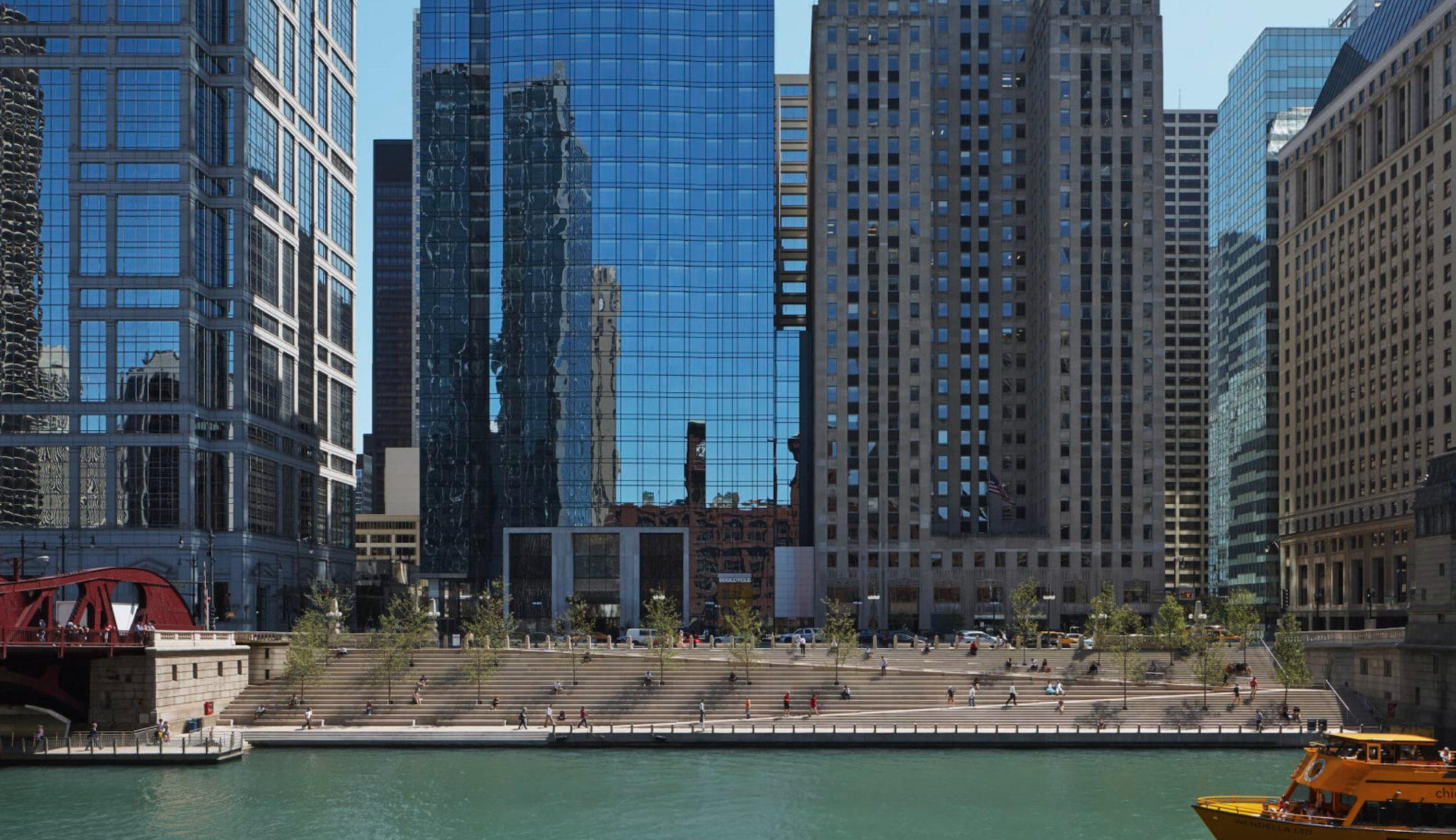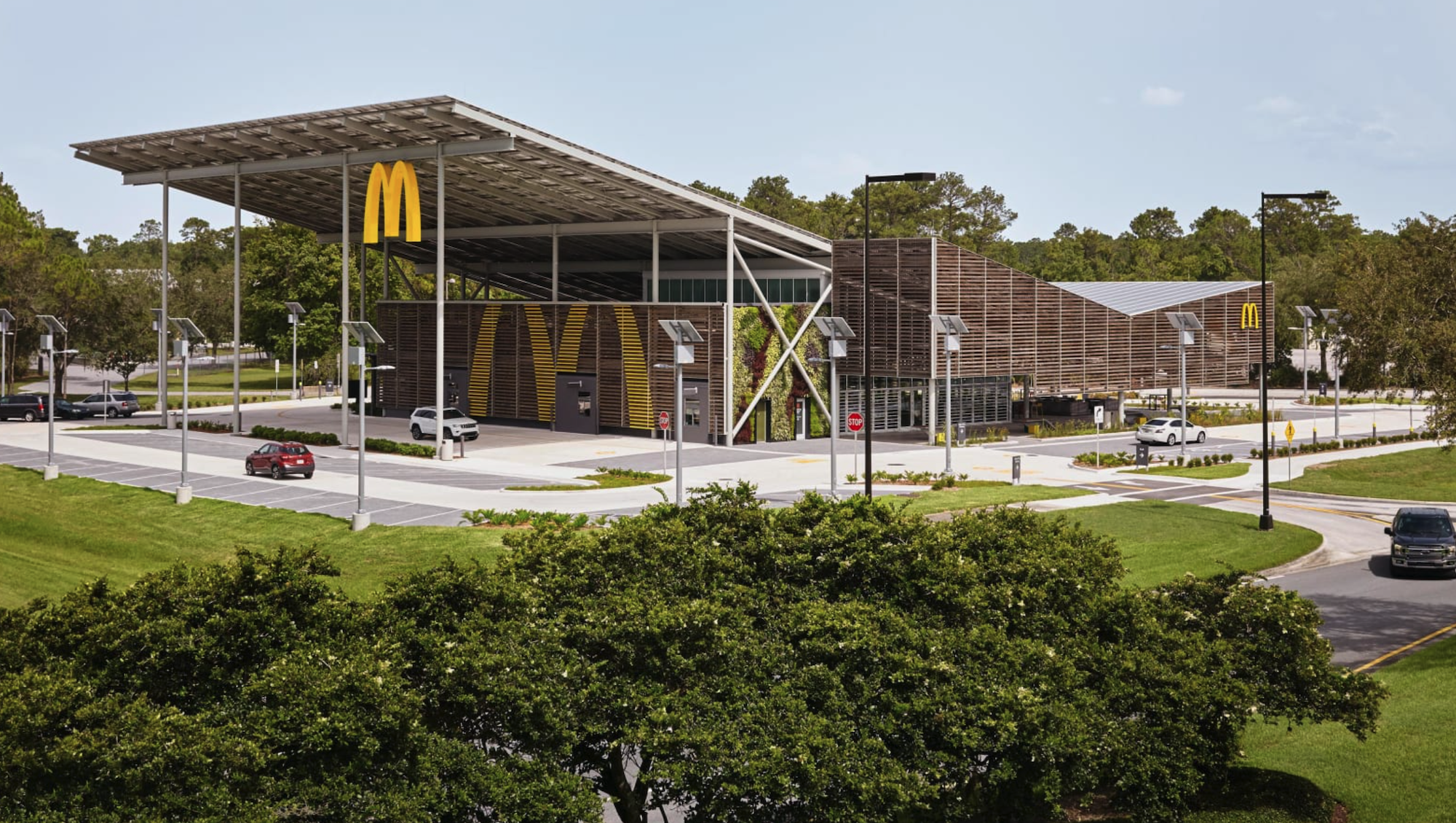The Board of Directors and the Strategic Council of the American Institute of Architects (AIA) are honoring Carol Ross Barney, FAIA, with the 2023 Gold Medal.
The Gold Medal honors an individual whose significant body of work has had a lasting influence on the theory and practice of architecture.
Barney is being recognized for her pursuit of architecture that betters the daily life of all who interact with it through nearly five decades of work. Barney earned her Bachelor of Architecture and Master of Architecture degrees from the University of Illinois at Urbana Champaign. After obtaining her bachelor’s degree, she enlisted in the U.S. Peace Corps and was deployed to Costa Rica where she worked for the fledgling Costa Rica National Park Service.
After her stint in the Peace Corps and time at the architecture firm Holabird & Root, Barney founded her practice, Ross Barney Architects, in 1981 in her native Chicago. Two years later, she was a recipient of the Plym Traveling Fellowship from University of Illinois Urbana Champaign, an opportunity that would invigorate her work in the public realm for the rest of her career.

In 1997, Barney was tasked with finding hope in the face of overwhelming tragedy as the lead designer for the Oklahoma City Federal Building. The project marked the first time a woman architect had been selected to lead such a commission. The 185,000-square-foot building, completed in 2005, integrates the necessary security measures with respect for pedestrians and the surrounding city. Seemingly at odds with the 1995 bombing incident that destroyed the Alfred P. Murrah Federal Building, Barney’s u-shaped design is a far cry from an impregnable fortress.
For nearly two decades, Barney championed the movement to inject new life into the Chicago River. The resulting Chicago Riverwalk is a 1.25-mile stretch of civic space that stretches from Lake Michigan to several of the river’s confluences. The park references the repurposed infrastructure that defines it in an effort to create discrete rooms between the bridges that span the river. Featuring kayak tours, a wine bar, veterans memorial, and countless public programs, the project has brought positive energy to Chicago’s urban realm and stands as a model for cities rethinking their water resources.
While Barney’s philosophy is evident in her work, she has, for nearly 30 years, delivered it to a generation of architects as an adjunct professor at the Illinois Institute of Technology. The topics of the studio courses Barney leads have been closely related to her practice, from water transportation to mixed use development that spurs a light manufacturing renaissance. Barney has also mentored countless talented architects in her studio, many of whom have built their own successful practices, become university architects, or discovered new paths through the values Barney instilled in them.

An unrivaled architect for the people, Barney exudes design excellence, social responsibility, and generosity. Throughout all of her work, she has endeavored to make the world a better place, and, in doing so, made an indelible mark on the profession. Her pioneering approach and ethics are clear examples of the highest aspirations of architecture.
Barney’s work has been celebrated with more than 200 national and international awards, including two COTE Top Ten Awards, the 2005 AIA Award for Public Architecture, and AIA Illinois Firm Award and Gold Medal.
Related Stories
Museums | Aug 11, 2010
Design guidelines for museums, archives, and art storage facilities
This column diagnoses the three most common moisture challenges with museums, archives, and art storage facilities and provides design guidance on how to avoid them.
| Aug 11, 2010
Broadway-style theater headed to Kentucky
One of Kentucky's largest performing arts venues should open in 2011—that's when construction is expected to wrap up on Eastern Kentucky University's Business & Technology Center for Performing Arts. The 93,000-sf Broadway-caliber theater will seat 2,000 audience members and have a 60×24-foot stage proscenium and a fly loft.
| Aug 11, 2010
Citizenship building in Texas targets LEED Silver
The Department of Homeland Security's new U.S. Citizenship and Immigration Services facility in Irving, Texas, was designed by 4240 Architecture and developed by JDL Castle Corporation. The focal point of the two-story, 56,000-sf building is the double-height, glass-walled Ceremony Room where new citizens take the oath.
| Aug 11, 2010
Carpenters' union helping build its own headquarters
The New England Regional Council of Carpenters headquarters in Dorchester, Mass., is taking shape within a 1940s industrial building. The Building Team of ADD Inc., RDK Engineers, Suffolk Construction, and the carpenters' Joint Apprenticeship Training Committee, is giving the old facility a modern makeover by converting the existing two-story structure into a three-story, 75,000-sf, LEED-certif...
| Aug 11, 2010
Utah research facility reflects Native American architecture
A $130 million research facility is being built at University of Utah's Salt Lake City campus. The James L. Sorenson Molecular Biotechnology Building—a USTAR Innovation Center—is being designed by the Atlanta office of Lord Aeck & Sargent, in association with Salt-Lake City-based Architectural Nexus.
| Aug 11, 2010
San Bernardino health center doubles in size
Temecula, Calif.-based EDGE was awarded the contract for California State University San Bernardino's health center renovation and expansion. The two-phase, $4 million project was designed by RSK Associates, San Francisco, and includes an 11,000-sf, tilt-up concrete expansion—which doubles the size of the facility—and site and infrastructure work.
| Aug 11, 2010
Goettsch Partners wins design competition for Soochow Securities HQ in China
Chicago-based Goettsch Partners has been selected to design the Soochow Securities Headquarters, the new office and stock exchange building for Soochow Securities Co. Ltd. The 21-story, 441,300-sf project includes 344,400 sf of office space, an 86,100-sf stock exchange, classrooms, and underground parking.
| Aug 11, 2010
New hospital expands Idaho healthcare options
Ascension Group Architects, Arlington, Texas, is designing a $150 million replacement hospital for Portneuf Medical Center in Pocatello, Idaho. An existing facility will be renovated as part of the project. The new six-story, 320-000-sf complex will house 187 beds, along with an intensive care unit, a cardiovascular care unit, pediatrics, psychiatry, surgical suites, rehabilitation clinic, and ...
| Aug 11, 2010
Colonnade fixes setback problem in Brooklyn condo project
The New York firm Scarano Architects was brought in by the developers of Olive Park condominiums in the Williamsburg section of Brooklyn to bring the facility up to code after frame out was completed. The architects designed colonnades along the building's perimeter to create the 15-foot setback required by the New York City Planning Commission.








